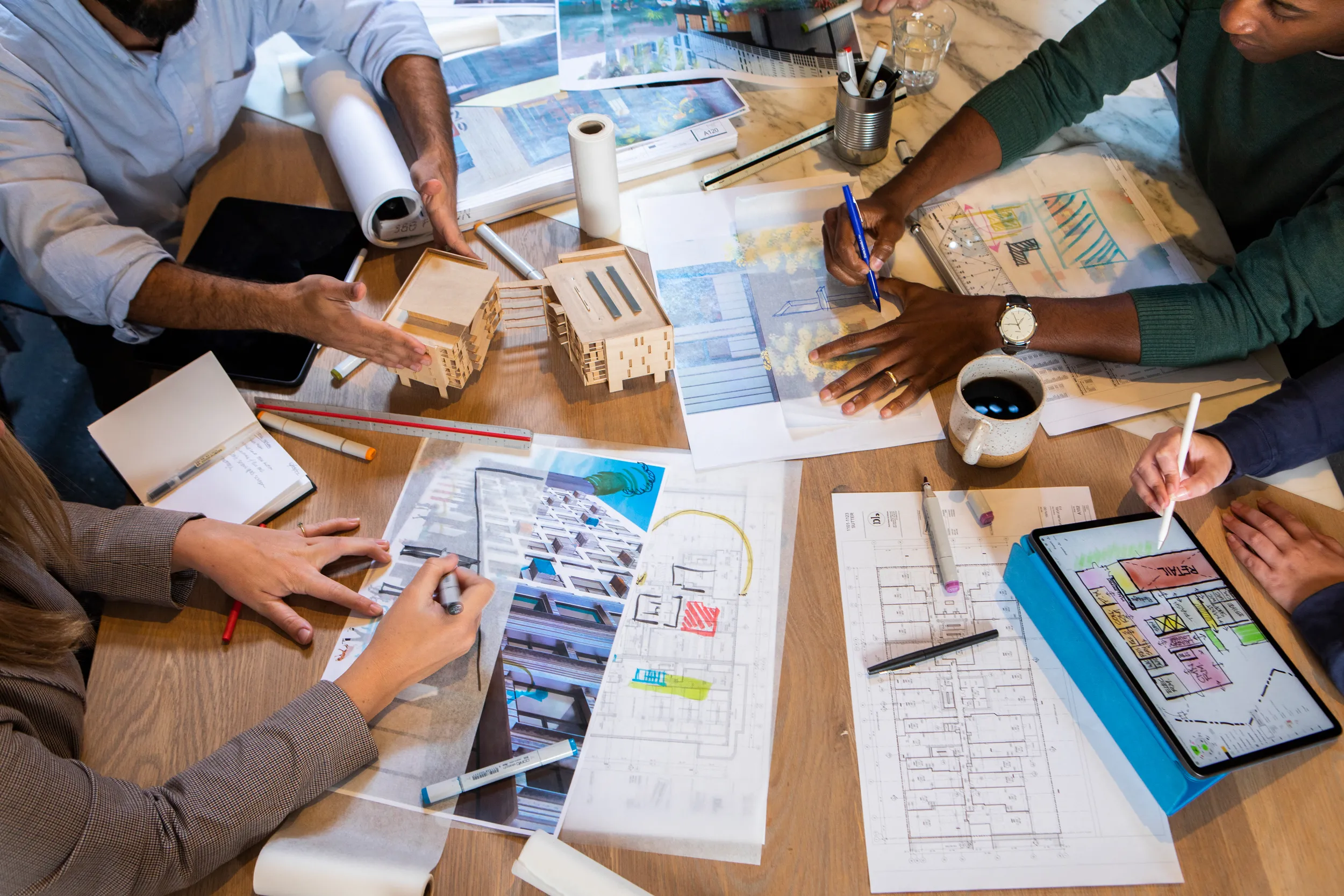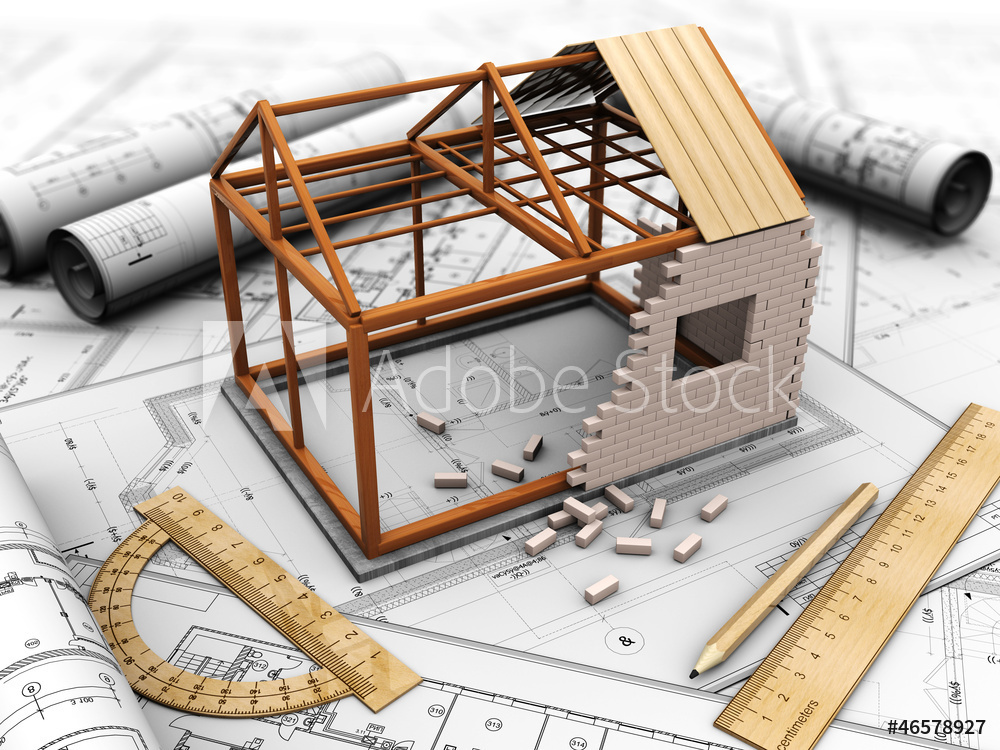Architect Collaboration Tips for Working with Engineers and Builders
Architect Collaboration Tips for Working with Engineers and Builders
Blog Article
Recognizing the Diverse Career Paths Available for Aspiring Architect
As an aspiring Architect, you have a globe of profession paths waiting on you. Each course provides special obstacles and opportunities to apply your creative thinking and technical knowledge. Whether you're attracted to standard architecture or the subtleties of lasting style, there's a specific niche that straightens with your interests. Recognizing these varied options can shape your expert trip, but which direction will you pick to check out initially?
Traditional Architecture: Designing Structures and buildings
Typical design focuses on developing buildings and frameworks that mix performance with visual appeal. Your layouts can show cultural heritage, showcasing neighborhood practices while satisfying modern demands.
You'll create skills in composing, model-making, and site analysis, enabling you to visualize and communicate your concepts efficiently. Involving with customers, you'll require to recognize their vision and equate it into viable layouts.
Furthermore, developing codes and sustainability methods are vital in your job, ensuring your structures are ecologically friendly and secure. As you grow in your occupation, you'll locate opportunities in property, business, or even repair projects, each offering special challenges. Accepting traditional architecture leads the way for a fulfilling career that admires the past while shaping the future.
Urban Planning: Forming Areas and Public Spaces
As a hopeful Architect, you can play an essential duty as a city planner, changing exactly how neighborhoods operate and connect. By employing community interaction methods, you'll ensure that homeowners have a voice in forming their environment. Plus, integrating sustainable style concepts will certainly help create areas that not only fulfill today's requirements but also safeguard the future.
Function of Urban Planners
While several might consider designers as the single visionaries behind buildings, metropolitan organizers play an essential function in forming the broader landscape of areas and public areas. They assess land usage, zoning regulations, and area needs to produce lasting environments that improve quality of life. By collaborating with different stakeholders, you'll help create parks, transportation systems, and residential locations that promote social communication and ease of access. Urban planners additionally focus on ecological factors to consider, making sure that developments integrate green areas and assistance biodiversity. Your competence in spatial design and area dynamics permits you to imagine future development while protecting cultural heritage. In this important role, you'll directly influence exactly how individuals experience their surroundings, making every project a chance for favorable change.
Community Interaction Techniques
Efficient neighborhood interaction strategies are vital for urban planners to ensure that the voices of locals are heard and valued in the preparation process. To foster significant discussion, you must prioritize open online forums and workshops where area members can express their ideas and worries. By proactively paying attention and integrating feedback, you'll produce spaces that mirror the neighborhood's requirements, ultimately leading to more effective and lasting urban settings.
Sustainable Design Principles
When creating metropolitan spaces, including lasting layout concepts is crucial for developing settings that grow both ecologically and socially. Think about integrating green spaces, like parks and yards, to boost biodiversity and boost air top quality.
Designing with water preservation in mind is also essential-- think of rainfall gardens and absorptive surfaces to manage stormwater. Entailing neighborhood participants throughout the preparation procedure assurances that the areas you develop meet their needs and encourage social communication. By embracing these concepts, you'll add to lively, lasting metropolitan landscapes that benefit everybody.

Landscape Style: Creating Lasting Outdoor Settings
As you check out landscape style, you'll find essential style concepts that produce practical and gorgeous outdoor areas. Lasting techniques play a crucial role in guaranteeing these atmospheres flourish while lessening environmental influence. And also, you'll discover a variety of profession chances that enable you to make a real distinction in how people connect with nature.
Style Principles in Landscape
Understanding layout concepts in landscape design is vital for producing lasting outdoor settings that harmonize with nature. You'll need to ponder elements like equilibrium, scale, and percentage to assure your styles really feel natural and welcoming. Furthermore, pay attention to seasonal modifications, creating with materials that complement the surroundings year-round.
Sustainable Practices Introduction
Lasting practices in landscape style not only concentrate on appearances yet also focus on eco-friendly wellness and resource preservation. By integrating native plants, you boost biodiversity and reduce the need for chemical fertilizers and pesticides. Implementing effective irrigation systems assists preserve water and lessens drainage, securing neighboring environments. You can create areas that promote soil wellness, such as utilizing organic products and practicing permaculture concepts. Additionally, integrating green framework, like rain gardens and porous pavements, aids in stormwater administration and minimizes urban warm. You add to a healthier earth and supply rooms that foster area link when you develop outside atmospheres with sustainability in mind. Eventually, these practices assure your layouts profit both people and the environment for many years to come. try this website
Career Opportunities Exploration
With a strong structure in sustainable techniques, landscape architecture supplies a selection of career paths that permit you to make a purposeful influence on the atmosphere. You could work as a landscape designer, developing cosmetically pleasing and functional outdoor areas, or concentrate on ecological restoration, aiding to revitalize damaged environments. Urban organizers commonly team up with landscape engineers to develop environment-friendly rooms in city settings, enhancing city livability. If you're enthusiastic regarding education, consider ending up being a landscape design instructor, inspiring future generations. Additionally, you could deal with nonprofits concentrated on ecological sustainability or take part in study to introduce new methods. Each path not just shapes stunning environments however additionally promotes a much healthier planet for future generations.
Lasting Style: Focusing on Eco-Friendly Practices
As you explore your job in architecture, accepting environment-friendly techniques can establish you apart in an affordable area. Lasting design focuses on developing structures that lessen ecological effect while improving passenger wellness. By integrating renewable products, energy-efficient systems, and lasting building strategies, you'll add to a greener future.
Begin by obtaining knowledge of environment-friendly accreditations like LEED or BREEAM, which can reinforce your qualifications. Take into consideration how all-natural light, ventilation, and thermal efficiency can maximize layout. Collaborate with designers and ecological consultants to introduce solutions that minimize waste and preserve sources.
Don't forget the value of neighborhood participation-- interesting regional stakeholders can motivate styles that balance with the setting. As clients increasingly prioritize sustainability, your experience in environment-friendly practices will not only attract projects but also meet your interest for liable architecture. Embrace this important facet of the occupation, and enjoy your anchor occupation thrive.
Historical Conservation: Safeguarding and Restoring Cultural Heritage
While you commence go to these guys on your building journey, consider the essential function of historical conservation in keeping our social heritage. This field concentrates on the defense and reconstruction of significant structures, websites, and frameworks that inform the tales of our past. By taking part in historical preservation, you'll help secure the architectural tradition that forms area identification.
As a historical preservation Architect, you'll assess historic value and examine the condition of structures. You'll function carefully with chroniclers and conservationists to assure authentic reconstruction techniques are utilized. This occupation course enables you to mix imagination with research study, enabling you to develop options that value original products and craftsmanship.
Your job not only adds to sustainability by reusing existing structures yet also promotes a feeling of pride within neighborhoods. Welcoming this course will certainly help you come to be a guardian of history, preserving the stories and visual appeals that enhance our lives.
Interior Architecture: Enhancing Indoor Spaces
Historic preservation and interior architecture both share a commitment to boosting the developed setting, but they focus on various aspects. While historic conservation highlights keeping a framework's social and historical worth, interior style nos in on maximizing indoor rooms for functionality and aesthetic appeals.
As an aspiring Architect, you'll locate that indoor design allows you to blend creativity with technical abilities. You'll develop spaces that not only look excellent yet additionally promote convenience and effectiveness. This area includes understanding how light, shade, and products engage within an area, affecting mood and functionality.
You'll service various tasks, from household homes to business offices, guaranteeing that each setting satisfies the demands of its occupants. By focusing on individual experience, you can change insides right into useful and inspiring spaces, making a substantial influence on how people connect with their environments. Accept the chance to enhance interior environments and form the way individuals live and function.
Industrial Design: Combining Performance With Looks
Industrial layout plays a vital role in developing products that perfectly blend aesthetics with performance, guaranteeing that what you make use of daily is not just aesthetically enticing yet also functional. As an aspiring Architect, you could engage on your own in this field, concentrating on making every little thing from furnishings to customer electronic devices. Your job includes understanding customer requirements, materials, and producing processes, enabling you to develop ingenious solutions that enhance day-to-day experiences.
In commercial style, you'll typically team up with engineers, makers, and online marketers, making certain that your designs are not just beautiful but also possible. This occupation path provides a vibrant atmosphere where creativity satisfies usefulness, making it a satisfying selection for architects interested in forming the items of tomorrow.
Regularly Asked Inquiries
What Educational Qualifications Do I Required to End Up Being an Engineer?
To end up being a designer, you'll require an expert level in architecture, commonly a Bachelor's or Master's. In addition, you'll have to finish an internship and pass the Architect Registration Evaluation to exercise lawfully.
Are There Accreditation Demands for Various Building Job Paths?
Yes, there're accreditation demands for numerous building paths. Architect. You'll need to pass exams, complete internships, and in some cases seek specialized training, depending on your chosen emphasis, like landscape style, urban layout, or historical conservation
What Software Application Skills Are Essential for Architects Today?

Just How Can I Gain Practical Experience While Examining Style?
You can get functional experience by interning at building firms, taking part in style competitions, volunteering for neighborhood tasks, or teaming up with schoolmates on real-world jobs. These chances enhance your skills and construct useful links in the sector.
What Work Opportunities Exist Outside Conventional Style Firms?
You can check out various job chances outside typical design firms, like metropolitan preparation, interior decoration, landscape design, building management, property development, or also functions in sustainability consulting. Each offers unique challenges and incentives.
Whether you're drawn to typical design or the subtleties of sustainable layout, there's a particular niche that straightens with your interests.When creating city spaces, integrating lasting style concepts is vital for developing environments that grow both ecologically and socially.As you discover landscape style, you'll uncover important design concepts that produce stunning and practical outdoor spaces.Understanding style concepts in landscape architecture is necessary for developing sustainable outdoor settings that harmonize with nature.In industrial layout, you'll commonly team up with online marketers, engineers, and makers, making sure that your designs are not only stunning yet also possible.
Report this page